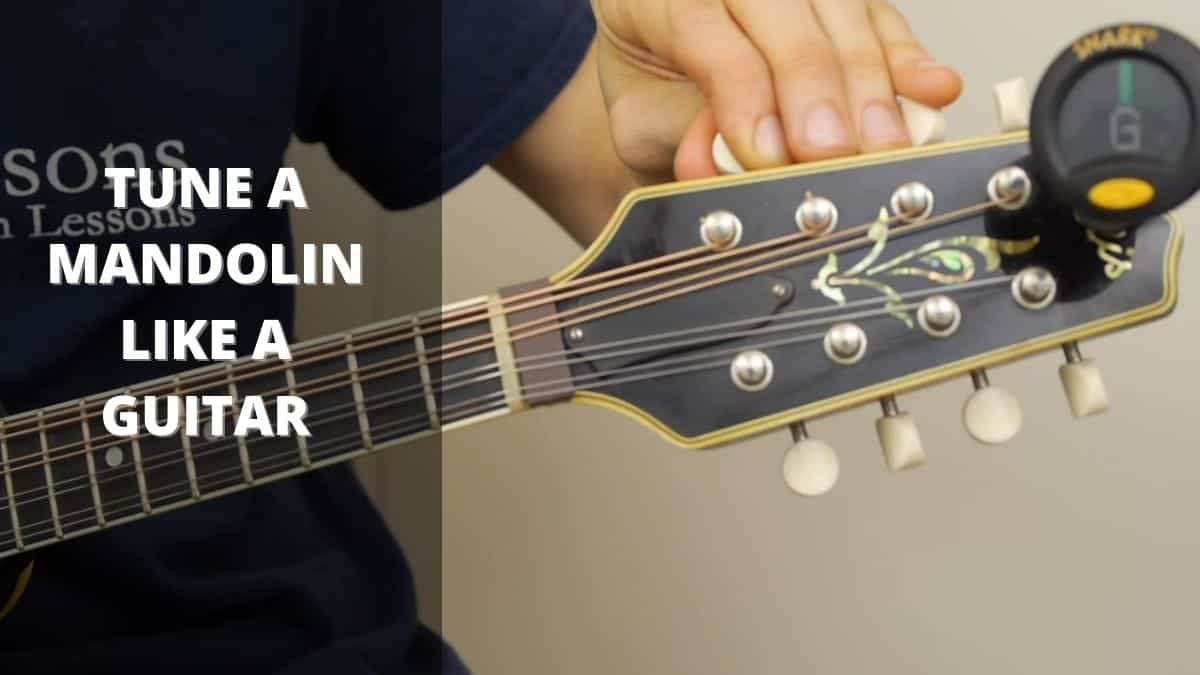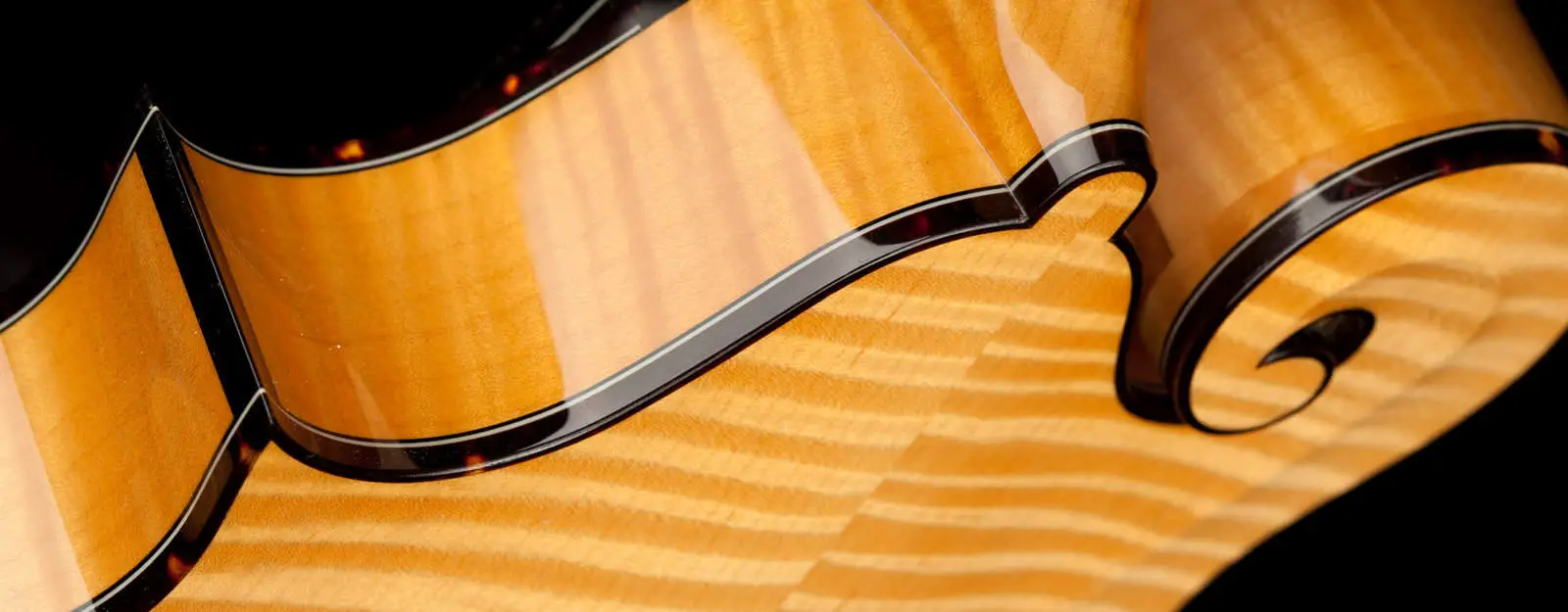As a musician, one of the most enchanting instruments I have ever heard is the mandolin. But what is a mandolin instrument? In this article, I will provide a guide to the sounds and features of the mandolin so you can understand why this instrument is so beloved.
History of the Mandolin
| Year | Development |
|---|---|
| 1700s | Mandolin originated in Naples, Italy. It was developed from the Lute family of instruments. |
| 1800s | Mandolin became popular in Europe and America. Different styles of mandolin were developed, including the Neapolitan, the flat-backed bowl-shaped mandolin, and the mandolino. |
| 1900s | The modern mandolin was developed in the early 1900s. It was designed to be louder and more versatile than the earlier versions. In the 1920s, the Gibson F-5 mandolin became the standard for modern mandolin design. |
| Present | Today, mandolin is used by many different genres of music, including classical, folk, bluegrass, and country. It is also used in some types of jazz and rock music. |
Different Types of Mandolins
| Type | Description |
|---|---|
| Neapolitan Mandolin | This mandolin has an oval-shaped body and 8 strings, with 4 pairs tuned in unison. It is a popular choice for traditional Italian folk music. |
| Modern Mandolin | This type of mandolin has a body with a teardrop-shaped design and 8 strings in 4 double courses. It is the most common mandolin used today. |
| Mandolin-Banjo | A hybrid instrument, the mandolin-banjo is usually strung with 8 strings in 4 double courses. It has a combination of a banjo’s neck and a mandolin’s body. |
| F-Style Mandolin | This type of mandolin has an F-shaped body with 8 strings in 4 double courses. It is popular among bluegrass players. |
| A-Style Mandolin | The A-style mandolin has an hourglass-shaped body with 8 strings in 4 double courses. It is often used to play a variety of musical genres. |
Mandolins come in a variety of shapes and sizes, and are available in four basic types: the Neapolitan mandolin, the modern mandolin, the mandolin-banjo, and the F- and A-style mandolins. The Neapolitan mandolin is an oval-shaped instrument with 8 strings in 4 double courses, and is a popular choice for traditional Italian folk music. The modern mandolin has a teardrop-shaped body and is the most common type used today. The mandolin-banjo is a hybrid instrument, with a combination of a banjo’s neck and a mandolin’s body. The F-style mandolin is F-shaped with 8 strings in 4 double courses, and is popular among bluegrass players. Lastly, the A-style mandolin has an hourglass-shaped body with 8 strings in 4 double courses, and is used to play a variety of musical genres.
Parts of a Mandolin
The mandolin is made up of a body, a neck, and strings. The body has a carved soundboard that amplifies the sound of the strings. The neck of the instrument is usually made of wood and has frets, which are metal bars that divide the neck into sections. The strings are typically made of steel or nylon, and are plucked to create sound. The strings are attached to the body at the bridge, which holds the strings in place. The strings are tuned with tuning pegs, which are located at the top of the neck. The strings are then strummed with a pick or a plectrum to create sound. The mandolin also features a tailpiece, which is located at the bottom of the body and helps to anchor the strings in place.
How to Play the Mandolin
- Learn basic chords and scales on the mandolin.
- Practice shifting between chords and playing scales.
- Listen to mandolin players to understand the sounds of different chords and scales.
- Learn to strum the mandolin by using a pick or by using your fingers.
- Practice playing simple melodies on the mandolin.
- Start learning basic right and left-hand techniques, such as hammer-ons, pull-offs, slides, and trills.
- Learn simple songs on the mandolin and practice them regularly.
- Practice playing with a metronome to get comfortable with various tempos.
- Practice playing with a backing track to get comfortable with different musical styles.
- Learn advanced mandolin techniques, such as tremolo, glissando, and fingerpicking.
Tuning a Mandolin
Mandolins are tuned in a variety of ways. Most commonly, the instrument is tuned in fifths, similar to a violin, with the strings tuned to G-D-A-E, from lowest to highest pitch. The strings on a mandolin are very thin and require careful tuning. A chromatic tuner is often used to help ensure the strings are in tune.
To tune the mandolin, start by loosening the strings and turning the tuning pegs until the strings are slack. Then, starting with the string closest to the ceiling, pluck the string and adjust the tuning peg until the pitch matches the desired tuning. Do the same for the remaining strings, tuning from the lowest pitch string to the highest. It is important to tune one string at a time, making small adjustments to each peg to ensure the strings are in tune with one another.
Once the strings are tuned, it is important to check the tuning regularly. Over time, the strings may go out of tune as they are played. To keep the mandolin sounding its best, it is important to occasionally check and adjust the tuning.
Care and Maintenance
Mandolins require a certain level of care and maintenance in order to ensure that they remain in good condition. To keep a mandolin in top condition, it should be regularly cleaned and checked for any damage or wear. All of the strings should be tightened and tuned, and the frets should be checked for any wear or damage. It is also important to keep the mandolin away from direct sunlight and extreme temperatures, as these can cause the wood to warp and damage the instrument. Mandolins should also be stored in a case or humidified room when not in use in order to protect them from dust, dirt, and moisture.
Popular Mandolin Players
- David Grisman
- Chris Thile
- Sam Bush
- Mike Marshall
- Mike Compton
- Adam Steffey
- John Reischman
- Tim O’Brien
- Chris Eldridge
- Sara Watkins
Mandolin is a popular stringed instrument, and there are many renowned mandolin players. David Grisman is one of the most celebrated mandolin players in the world. He has been active since the 1960s and is widely credited for having helped popularize the mandolin. Chris Thile is another popular mandolin player, with a career spanning from childhood to adulthood. He has won numerous awards, including a Grammy and a MacArthur Fellowship. Sam Bush is another well-known mandolin player who has been playing since the 1970s. He has collaborated with countless musicians and has won several awards, including a Grammy. Mike Marshall is another legendary mandolin player, having worked with many greats, including Bela Fleck and the Flecktones. He has released many solo albums and continues to tour and perform with other mandolin players. Mike Compton is another great mandolin player, known for his progressive bluegrass style. He has won several awards, including a Grammy, and has released several solo albums. Adam Steffey is another renowned mandolin player, known for his modern bluegrass style. He has released several solo albums and has worked with many greats, including Alison Krauss and Union Station. John Reischman is another great mandolin player, having released several solo albums and collaborated with many greats. Tim O’Brien is another popular mandolin player, having worked with many greats, including Bela Fleck and the Flecktones. Chris Eldridge is another renowned mandolin player, having worked with many greats, including the Punch Brothers. Sara Watkins is another well-known mandolin player, having won a Grammy and released several solo albums.
Mandolin Accessories
| Accessory | Description |
|---|---|
| Strings | The strings provide the instrument’s sound. Different sizes and materials will produce different sounds. |
| Picks | Picks are used to pluck the strings and create different tones. |
| Tuners | Tuners help keep your mandolin in tune. |
| Cases | Cases are used to store and transport a mandolin. |
| Amplifiers | Amplifiers are used to increase the volume of a mandolin. |
Mandolins require several accessories to be played, such as strings, picks, tuners, cases, and amplifiers. Strings provide the instrument’s sound, and come in various sizes and materials. Picks are used to pluck the strings and create different tones. Tuners help keep your mandolin in tune, while cases are used to store and transport the instrument. Lastly, amplifiers are used to increase the volume of a mandolin.
Frequently Asked Questions
What is the sound of a mandolin?
The mandolin produces a bright, cutting sound that is well-suited for many types of music. Its higher pitched tone is often used in folk and country music, though it can be used in many different genres. The sound is produced when the strings of the mandolin are plucked or strummed, and can range from upbeat, cheerful tones to complex, rolling chords.
What is the history of the mandolin?
The mandolin is believed to have originated in Italy sometime in the late 17th or early 18th century. It is derived from the lute, an instrument that was popular in Europe during the Renaissance period. The mandolin gained popularity in Europe during the Baroque period and was used to accompany operas and chamber music. It was later adopted by European classical composers such as Bach, Haydn and Mozart. In the 19th century, the mandolin spread to the United States, where it became popular in folk and bluegrass music. By the early 20th century, the mandolin had become an essential part of the American music scene, and it remains popular today.
Where Does The Mandolin Originate From?
The mandolin is a small, stringed musical instrument that originated in Italy in the late 17th century. It is descended from the lute, an ancient instrument that has been around since antiquity. The mandolin is most closely associated with classical music, but it has been used in a variety of genres including folk, rock, bluegrass, and jazz. The instrument is still popular today, with many players from around the world.
What are some of the unique features of the mandolin?
The mandolin is a unique stringed instrument with a distinctive sound and shape. Its most distinguishing feature is its small, double-cutaway body design, which gives it a bright, crisp tone and a wide range of tonal possibilities. Other features include its fretboard, which is much thinner than that of a guitar, and its eight strings, which are tuned in pairs and plucked with a flatpick or a pick and a thumb. Additionally, the mandolin’s strings are often adjusted differently than those of a guitar, creating a unique sound.
How is the Mandolin Different from Other Stringed Instruments?
The mandolin is a small stringed instrument with eight strings arranged in four pairs. It is similar to other stringed instruments such as the guitar, violin and lute, but has distinct features that set it apart. The mandolin typically has a bowl-shaped back, usually made of wood, with a flat front. It has a shorter neck than the guitar and shorter strings, which are tuned in courses of two strings. The mandolin has a unique sound and is used in a wide range of musical genres, from folk to classical.
Conclusion
The mandolin is an incredibly versatile and enchanting instrument. It offers a unique sound that is great for any genre of music. Its size and portability make it a great choice for any musician looking for a way to add a special touch to their music. With a variety of models and styles available, there is sure to be a mandolin perfect for any musician.






